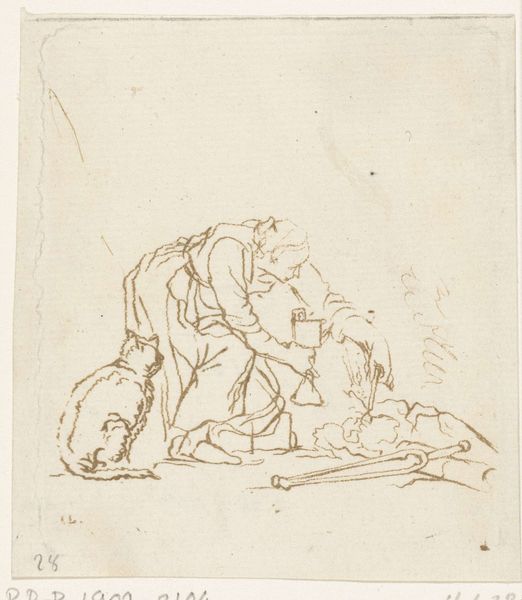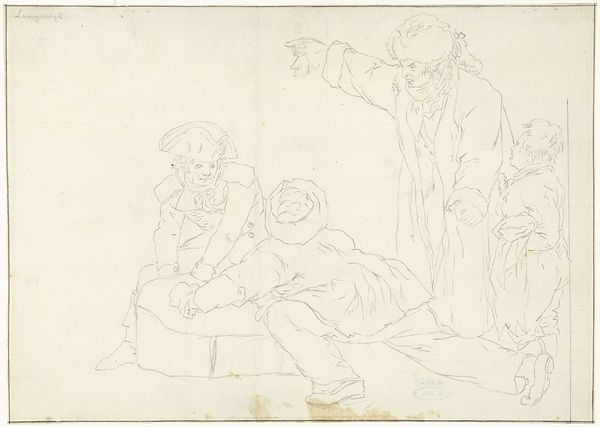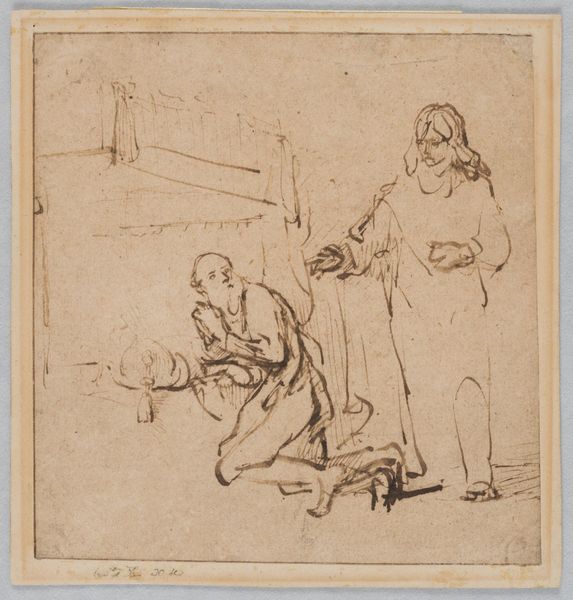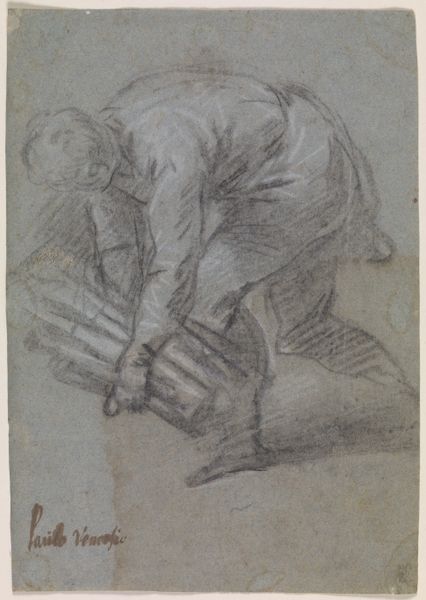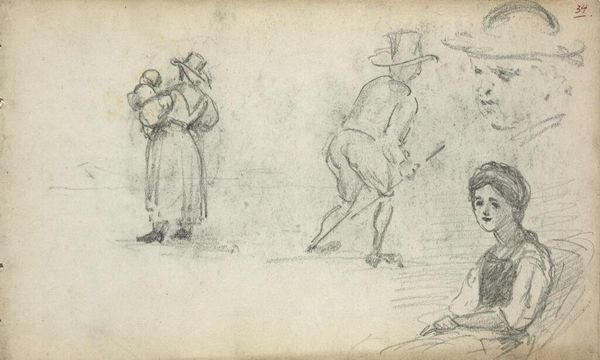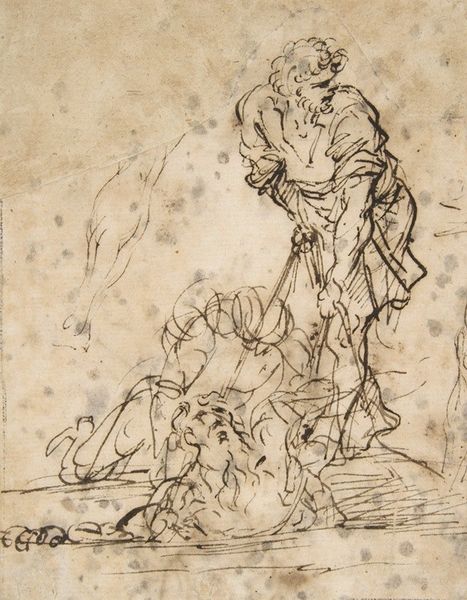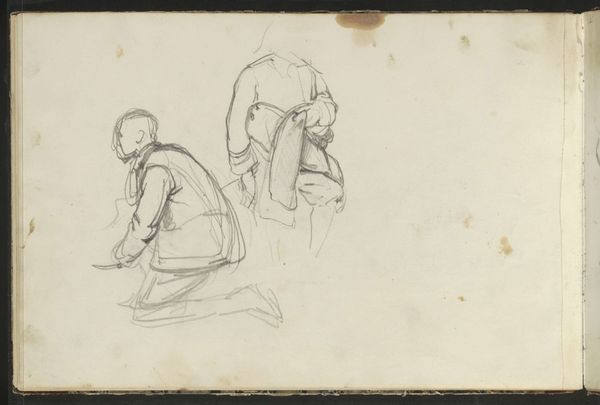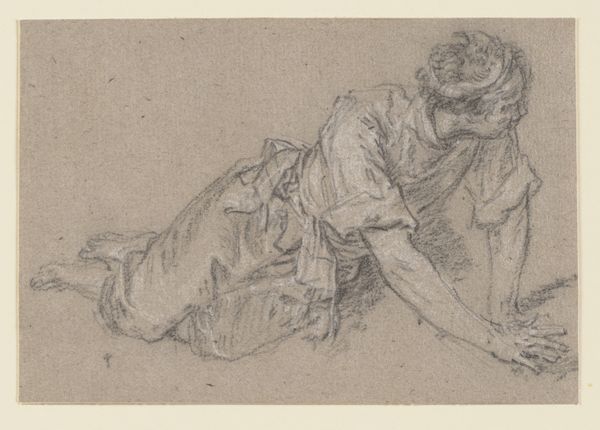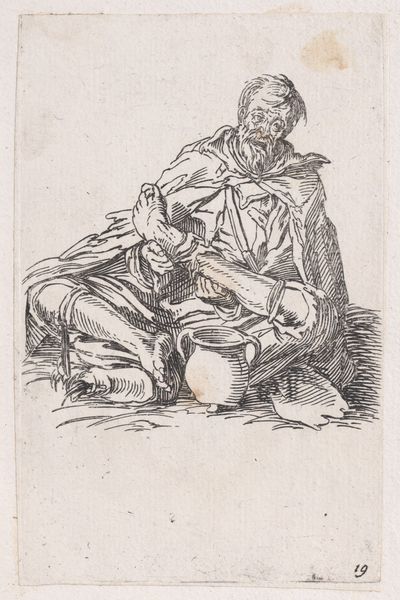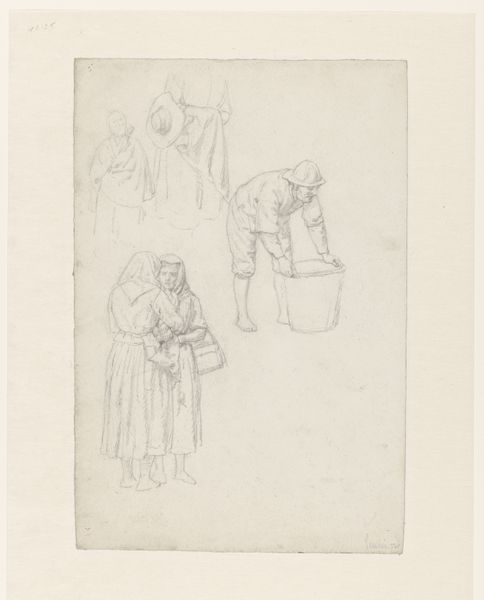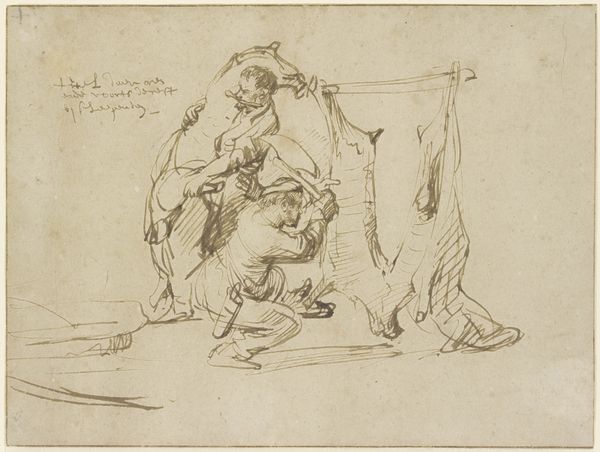
Man buigt zich over een kind, dat in een stoel zit 1867 - 1923
0:00
0:00
Dimensions: height 197 mm, width 120 mm
Copyright: Rijks Museum: Open Domain
Curator: We’re looking at a drawing by George Hendrik Breitner, "Man buigt zich over een kind, dat in een stoel zit," created sometime between 1867 and 1923. It's currently held at the Rijksmuseum. Editor: My first thought is of tenderness. The leaning figure, the fragile lines... it feels like a captured moment of quiet intimacy. Almost like a Degas, but less finished. Curator: Breitner was deeply embedded in the daily grind of Amsterdam. Consider how drawings like this might have been rapidly executed amidst the bustle, a direct transcription of what he saw. The medium itself, humble pencil on paper, underscores its accessibility. It's a work rooted in the real, immediate conditions of urban life. Editor: Absolutely. But let's consider what he chooses to represent. The bent figure evokes compassion, guardianship. The downward gaze towards the child implies vulnerability and trust. Are we seeing a father and child here? The pose also evokes religious imagery; think of depictions of the Holy Family or acts of blessing. Is there an attempt at ennobling the quotidian? Curator: That's fascinating, linking it to religious iconography. Breitner certainly aimed to document ordinary lives, but it's important to acknowledge the labour inherent in representation. The sketching, the selection of the subject... These weren’t simply objective records; they were shaped by Breitner's social position, his artistic training, and the market he operated within. His means of living shaped his vision. Editor: True. However, those choices still create a symbolic landscape. Even in an unfinished sketch, certain motifs – the leaning figure, the protective gesture – carry cultural weight. The lack of detail invites the viewer to project their own understanding of familial roles onto the image, deepening its symbolic power. I wonder if this sketch served as a seed, perhaps germinating in the creation of some grander depiction or theme? Curator: An interesting thought. Ultimately, what this drawing provides is access to Breitner's working process and vision. By carefully analyzing the materials used, his artistic formation, and the economic contexts which surround artistic practice we gain a profound understanding. Editor: And perhaps an inkling of a universal human connection, echoing across time and conveyed through carefully chosen, emotionally resonant symbols.
Comments
No comments
Be the first to comment and join the conversation on the ultimate creative platform.
